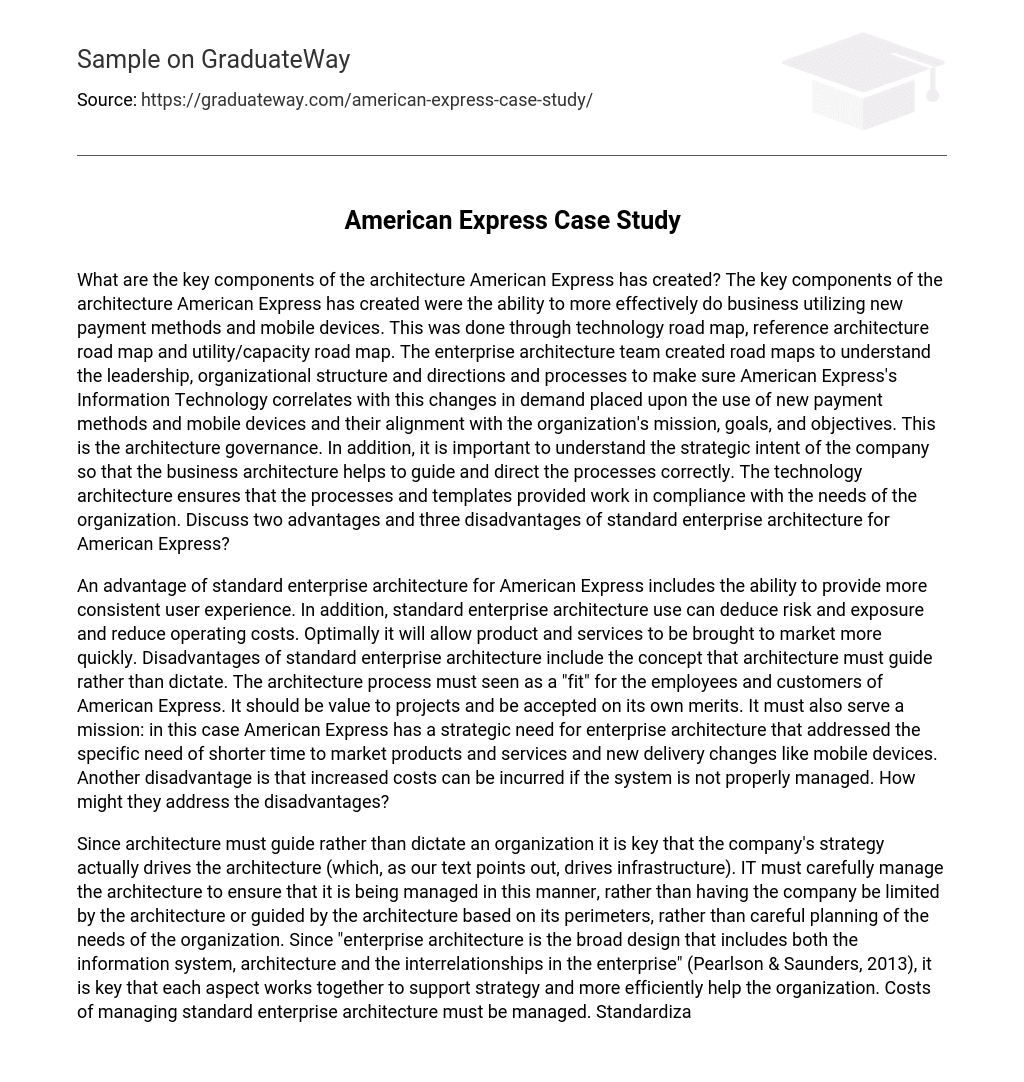American Express has created key components in their architecture that allow for more efficient business operations using new payment methods and mobile devices. This was achieved through the use of technology road maps, reference architecture road maps, and utility/capacity road maps. The enterprise architecture team developed these road maps to align American Express’s Information Technology with the changing demands brought about by the use of new payment methods and mobile devices. They also ensured that the organization’s mission, goals, and objectives were integrated into the architecture governance. It is crucial to understand the strategic intent of the company to guide and direct the business processes correctly. The technology architecture ensures that the provided processes and templates comply with the organization’s needs. Now, let’s discuss two advantages and three disadvantages of standard enterprise architecture for American Express.
Implementing standard enterprise architecture at American Express has several advantages. These include ensuring a consistent user experience, identifying and mitigating risks, and reducing operating costs. Additionally, it has the potential to expedite the introduction of products and services to the market.
However, there are certain considerations regarding disadvantages. It is important to view the architecture not as a strict mandate but rather as a guide that aligns with the needs and preferences of both American Express employees and customers. The architecture should provide value and acceptance based on its own merits by addressing strategic requirements for shorter time-to-market for products and services, as well as adapting to new delivery channels like mobile devices.
Improper management of this system could result in increased costs. Therefore, effective measures must be taken to address these disadvantages.
The organization’s strategy must drive the architecture, which in turn drives infrastructure. It is important for IT to manage the architecture in a way that guides the organization instead of limiting it or following predetermined parameters. Enterprise architecture encompasses the design of both the information system and the interrelationships within the enterprise. Therefore, all aspects of the architecture should work together to support strategy and optimize efficiency. The costs of managing standard enterprise architecture need to be carefully managed. Standardization can lead to lower operating costs and increased consistency within the organization. However, IT must also anticipate and adapt to new technologies in order to ensure that the system can flexibly adjust to future needs.





